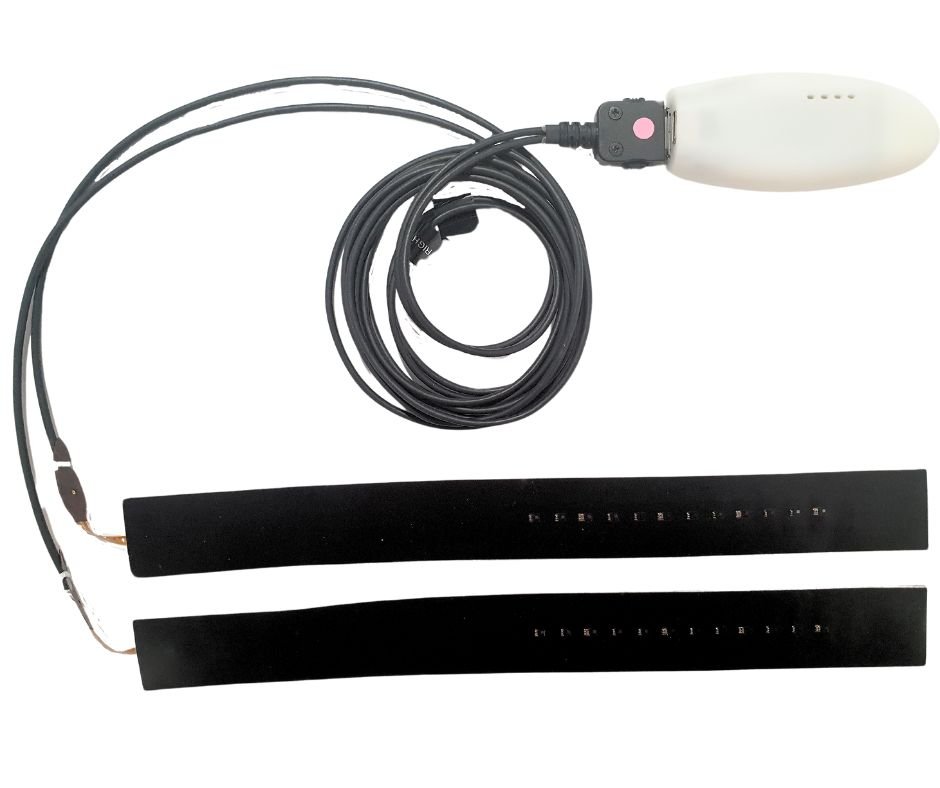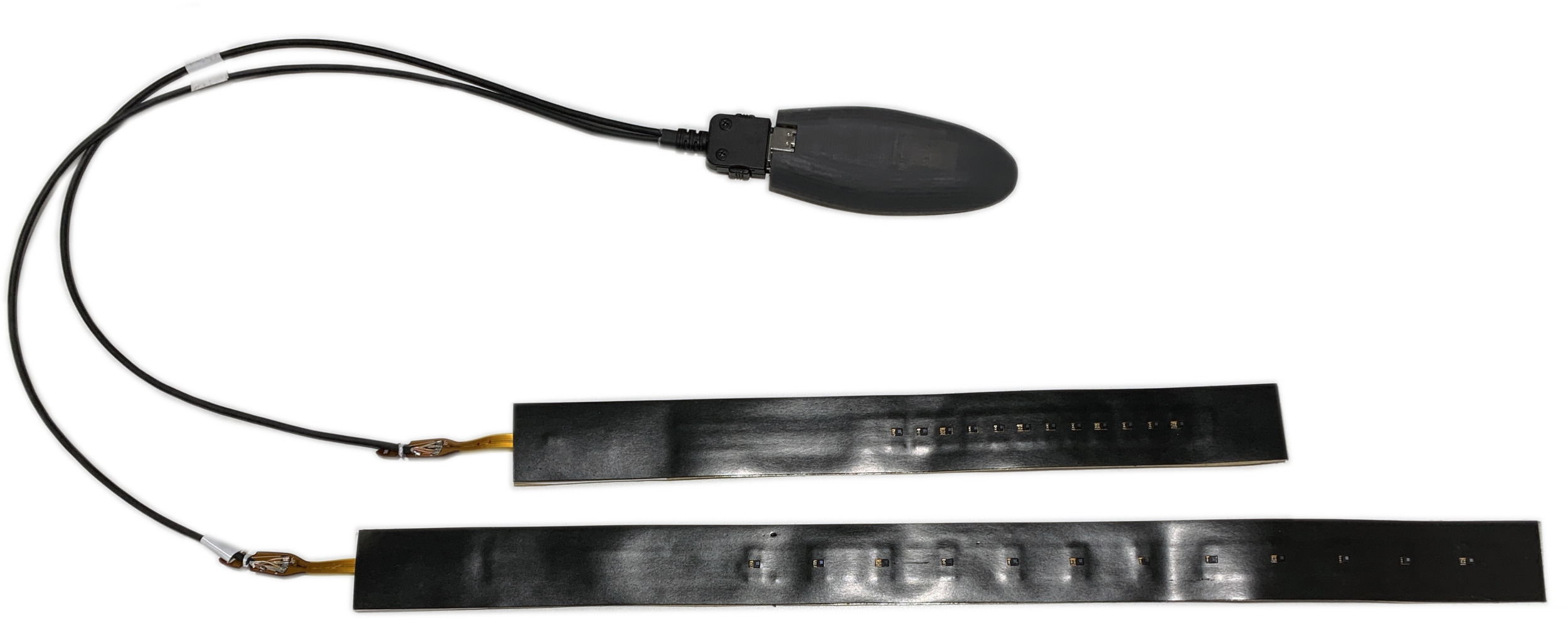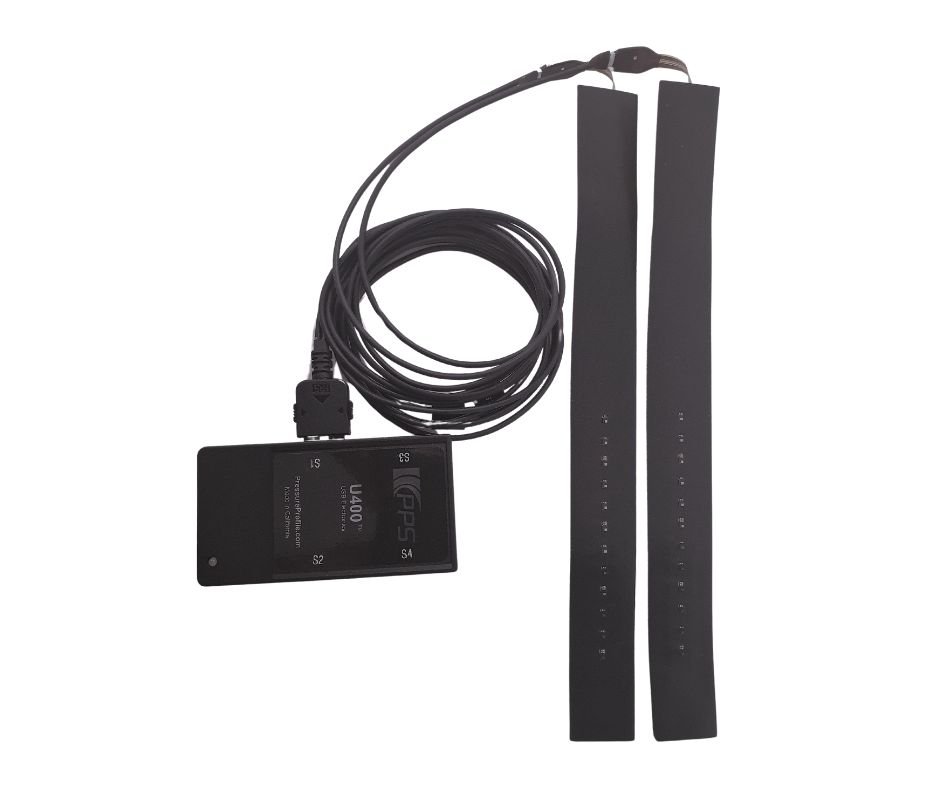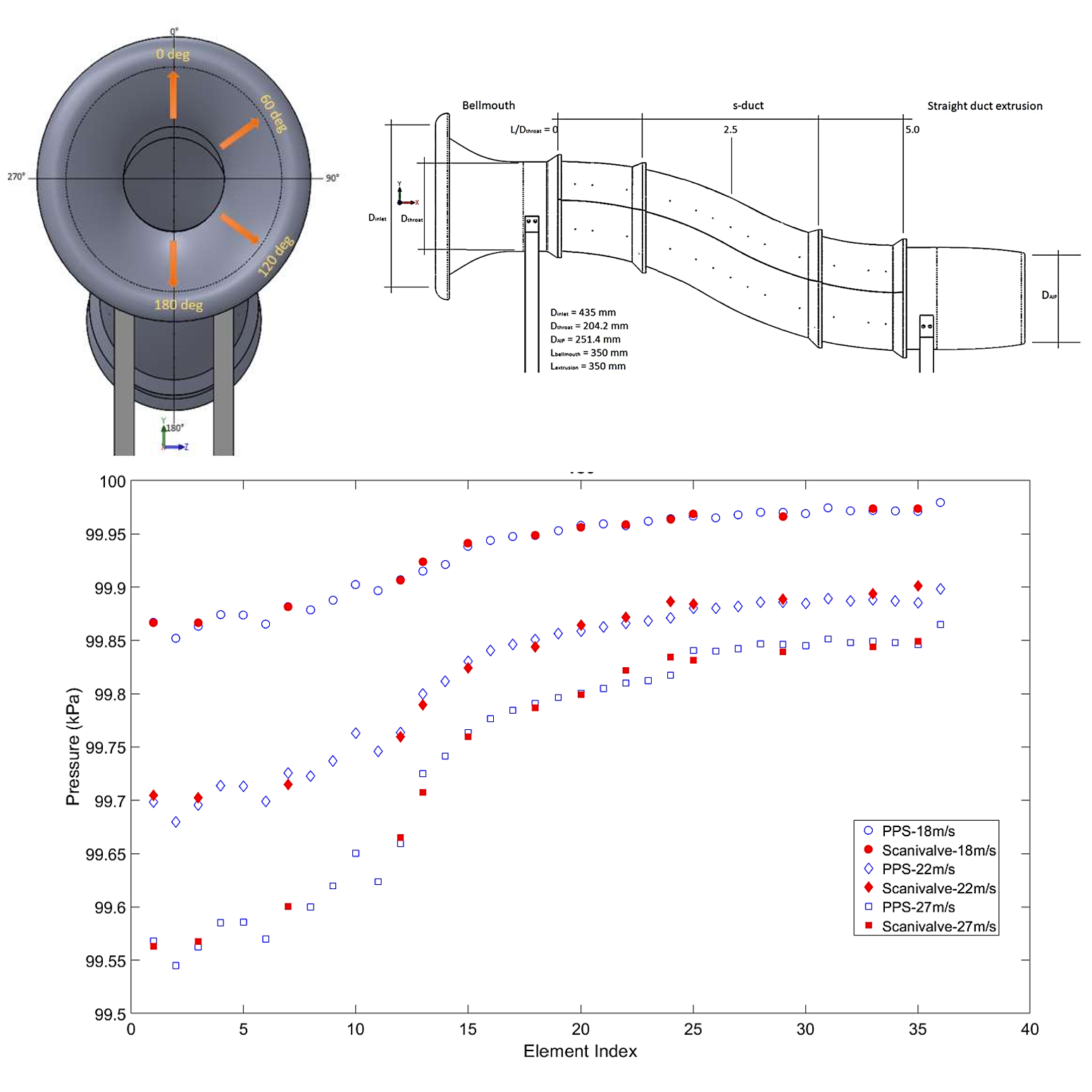AeroStrip - pressure sensor strip for Aerodynamics
The PPS AeroStrip provides a simple and convenient replacement for traditional pressure tapping or pressure-sensitive paint. It is a low profile, rapidly deployable air pressure sensing strip for aerodynamic measurement and surface optimization for motorsport and aerospace applications.
The AeroStrip consists of an extremely thin strip of sensors that can be applied, and reapplied, non-destructively to test surfaces for pressure measurement due to reusable masked adhesive backing. It has comparable accuracy to pressure tapping in subsonic flow, but with a tiny fraction of the setup time and cost.
With AeroStrip, you can quickly take non-destructive outside pressure measurements from control surfaces, live or in a wind tunnel, enabling faster turnaround and optimization of aerodynamic components







